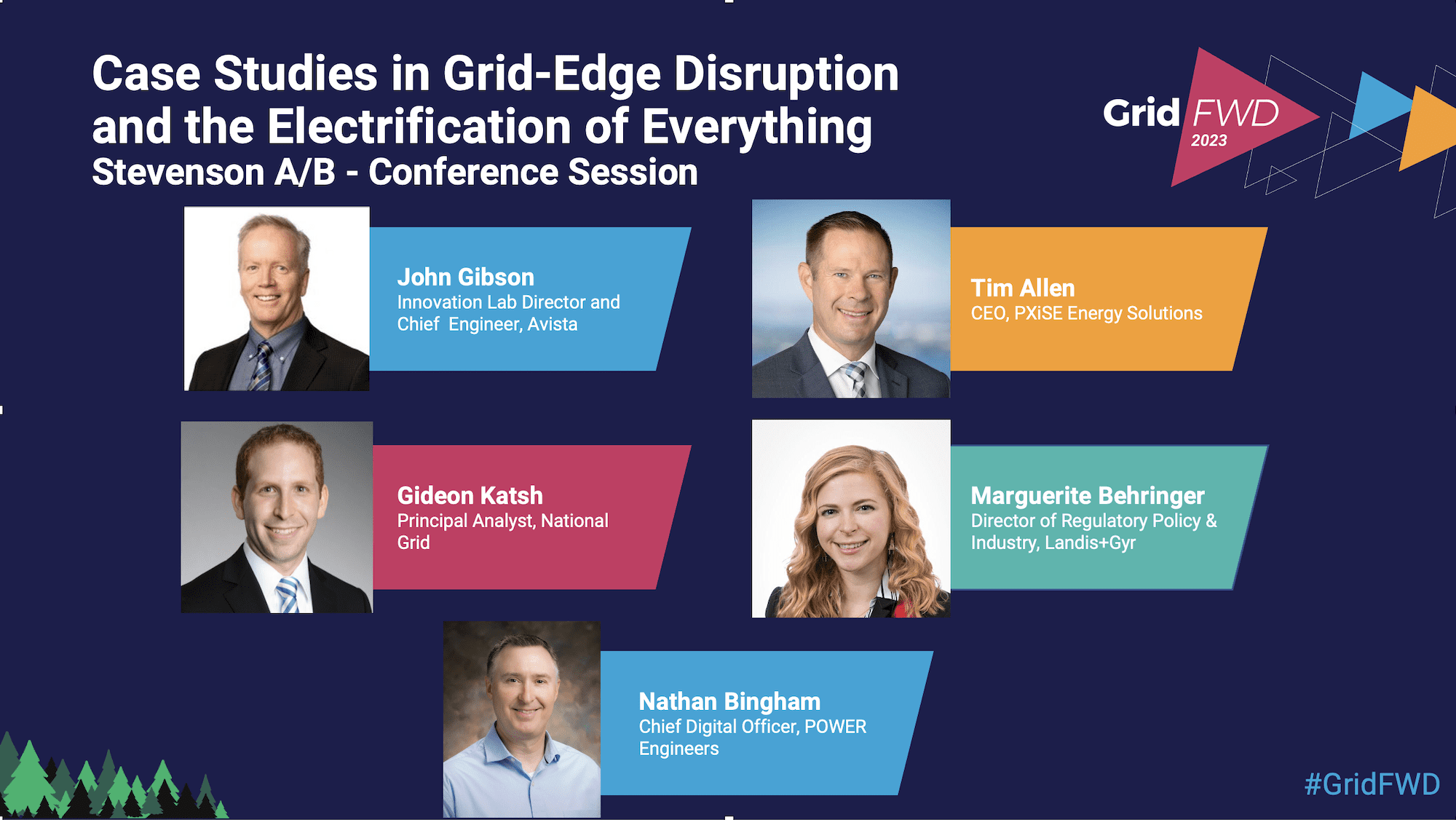An article by Brett Lyon and Tom Brim,
North Highland’s Energy and Utilities practice
Electric utilities now have access to a rapidly proliferating array of technologies that help operators manage the disruption facing the grid with an eye toward resiliency. Grid Forward is once again at the forefront of this conversation at the 2023 Grid Forward conference at Skamania Lodge in Stevenson, Washington featured a unique track of Tech Jam sessions dedicated to sharing real world applications of emerging grid technology solutions. These sessions paired a technology provider with a utility customer to discuss how technology is helping utilities accelerate grid modernization.
Resiliency and reducing wildfire risk
Continuing from 2022’s conference in Denver, increasing resiliency by reducing wildfire risk was a theme at 2023 Grid Forward. In their session titled “Remote Grids: A Safe and Cost-Effective Replacement for Rural Distribution Lines,” Bennett Chabot from PG&E and BoxPower’s Anderson Barkow shared how PG&E is installing Remote Grids from BoxPower in far flung grid outposts. BoxPower’s off-grid system combines a solar array, battery storage system, and propane backup generator to provide reliable power to customers at the end of a distribution line. This is literally a remote grid – not connected by wires to the rest of PG&E’s network but owned and maintained by the utility.

BoxPower’s Remote Grid solar array in Briceburg, CA. Photo Credit: BoxPower
Using these remote grids, PG&E has been able to decommission miles of overhead power lines in high wildfire risk areas. The remote grids installed so far have demonstrated 99.9% reliability since installation, improved resiliency, and protected customers from winter storm and wildfire related outages. These microgrids are also cost effective, saving millions of dollars compared to traditional alternatives, which in many instances would require moving overhead wires underground. PG&E has identified hundreds of potential remote grid sites within its service territory.
Transmission and distribution innovations
In the Northwest, utilities are seeing unprecedented load growth. Much of this load growth is occurring faster than then new transmission and distribution infrastructure can be built, and so is straining the grid. In the session titled “Accelerated Power Delivery through Innovative Solutions and Partnerships,” Cole Bode and Jason Green discussed how Delta Star Inc’s mobile substations enabled Umatilla Electric to accommodate a doubling of System Peak load between 2019 and 2023. This growth, almost entirely attributed to new data center construction in Umatilla Electric’s service territory, required new grid infrastructure, particularly substations, which can take 18-24 months to complete. Delta Star’s mobile substations, which can be ready in nine months, have been essential to ensuring Umatilla Electric is able to meet customer demand growth as permanent substations are built.
In addition to grid infrastructure, customer program and grid edge technologies play a key role in shaping a resilient, modern grid. Darren Murtaugh from Portland General Electric (PGE) and Colin Gibbs from Sense hosted a session titled “Embedded Intelligence: Making Smart Meters Sexy Again.” Darren and Colin shared that Sense’s technology, which has been embedded in next generation utility meters, provides utilities (and customers) with device-level usage information. This not only gives utilities information on which devices are running during any given time, or are being turned down for demand response curtailment, but also identifies safety and reliability issues through waveform anomaly analysis. “We are excited by the opportunities this level of analytics will enable, prospectively leading to new customer offerings and enhancing our Virtual Power Plant operations,” says PGE’s Murtaugh.
EV smart charging
Electric Vehicles (EVs) have huge potential to both strain and aid grid resiliency and as a result there are numerous new utility scale technologies supporting EV adoption. Eamonn Urey from Salt River Project (SRP) and WeaveGrid’s Geoff Garinger shared the findings of their EV Smart Charge pilot. SRP tested seven different rates, mostly different flavors of time of use. One of the utility’s goals is to avoid a situation where a second “shadow” peak is created when customers plug in EVs as soon as off-peak prices kick in. WeaveGrid’s pilot grouped participants into nine cohorts and moved them through several phases, including three Managed Charging scenarios, to encourage customers to charge at specific time periods, for instance in the afternoon when solar power is most readily available. Another cohort placed vehicles into the Distribution Integrated Smart Charging Orchestration (DISCO) algorithm. WeaveGrid’s DISCO technology coordinated charging schedules for all EVs in the cohort each night, creating a smart sequence based on driver’s preferences and battery charge levels. The results, illustrated the charts below, were that the charge load of all EVs in the DISCO cohort were more evenly distributed throughout the night reducing the shadow peak by up to 65% in some cases.

Charts show energy usage from charging of a group of seven electric vehicles. The top chart shows an estimate of what the charging curve would look like with managed charging aligned to TOU rates only. You can see the shadow peak, created when customers plug in their vehicles at the end of the peak period. The bottom chart shows load with WeaveGrid’s DISCO algorithm applied, which evenly spreads charging loads during hours when grid demand is lightest. Image Credit: WeaveGrid
This is just a small slice of what was shared at the conference. To see a full list of sessions that took place, check out the 2023 Conference Agenda here.
Grid Forward is excited about the growing technology solutions enabling a stronger, more resilient, and cost-effective grid. We are seeing utilities and technologists come together to innovate, learn, and share for the benefit of consumers and look forward to seeing how this space evolves in 2024.



